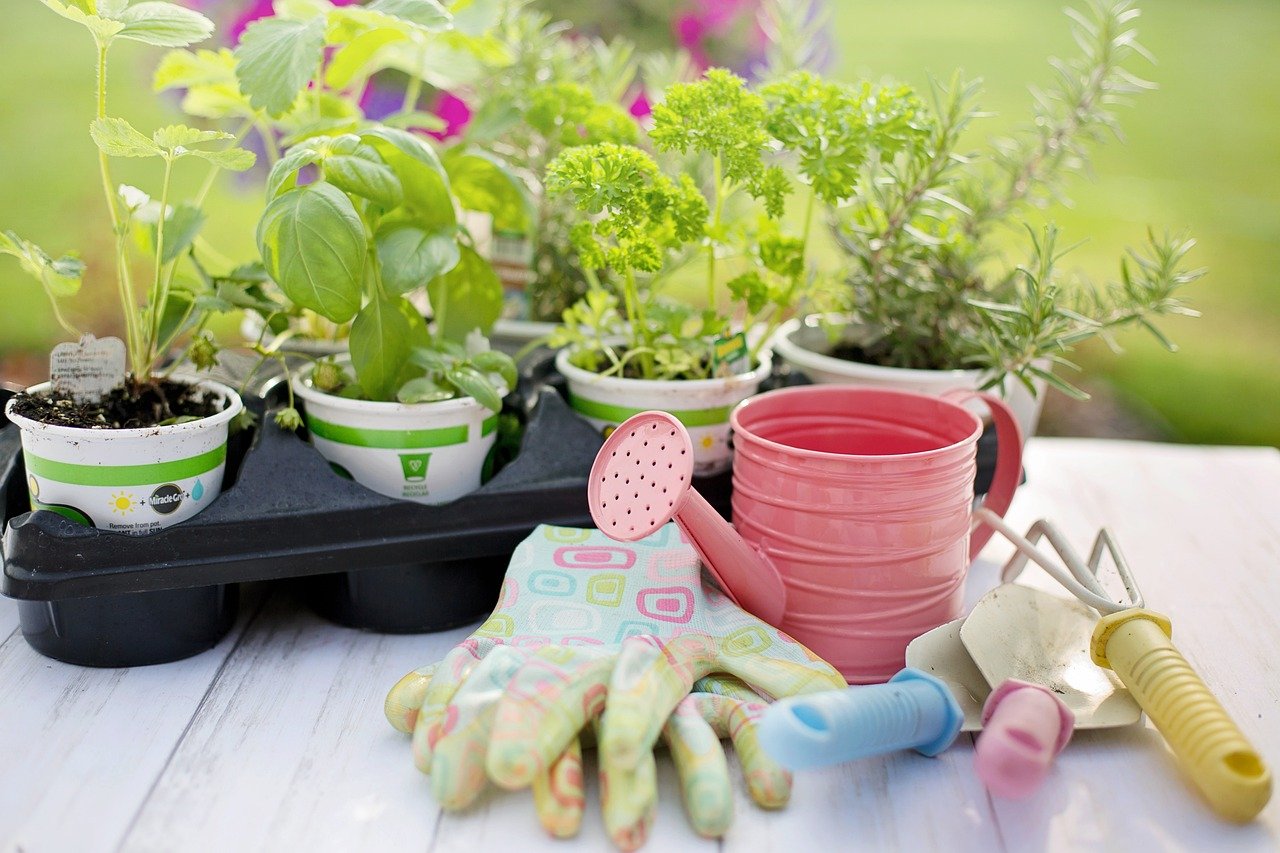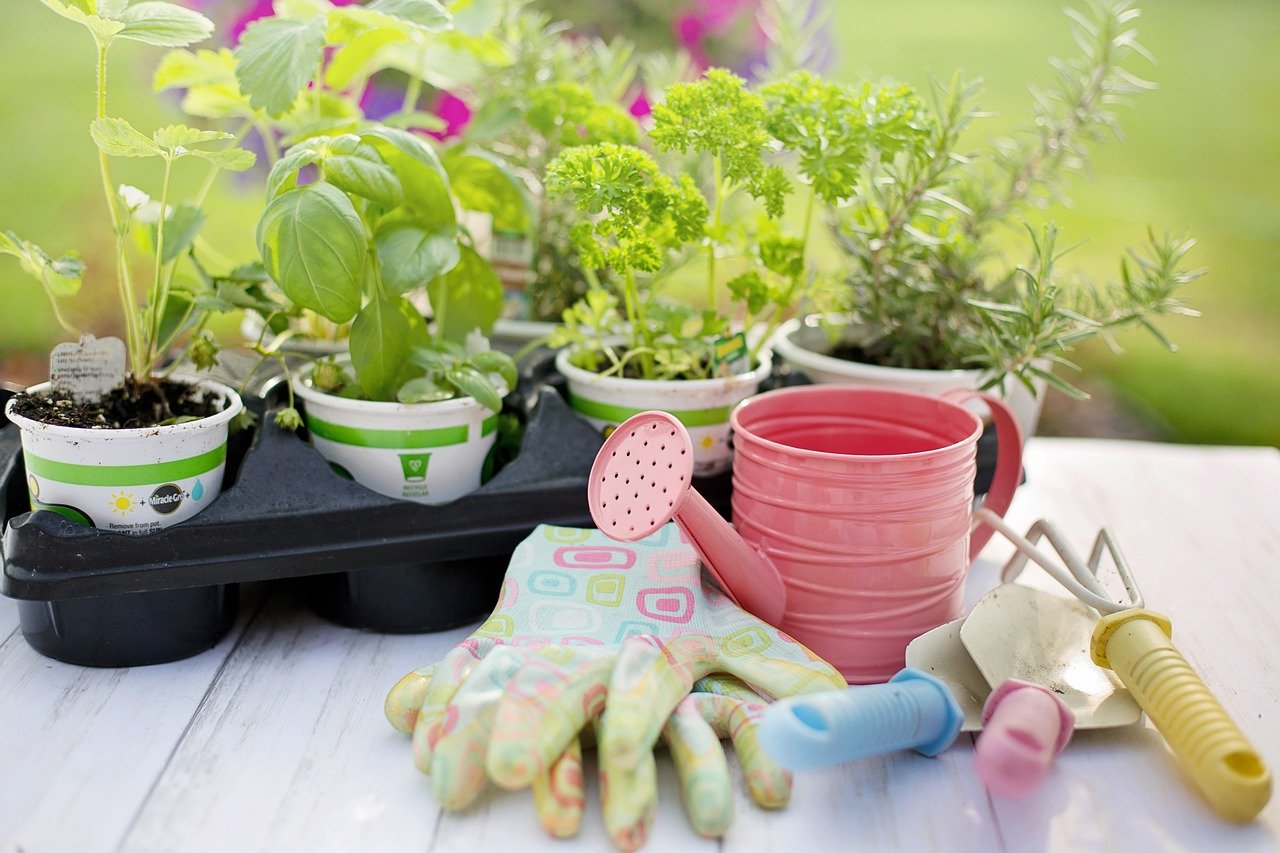Have you ever dreamed of having your own organic vegetable garden, filled with fresh and nutritious produce? Look no further! In this article, we will guide you through the process of building and maintaining an organic vegetable garden. From choosing the right location to planting your seeds and tending to your crops, we will provide you with all the knowledge and tips you need to create a thriving and sustainable garden. Whether you have a small backyard or a spacious plot of land, get ready to roll up your sleeves and dig into the world of organic gardening!
- Selecting the ideal location for your garden
- Planning the layout and design of your garden
- Soil preparation for a thriving vegetable garden
- Choosing the best organic vegetable varieties
- Seeding, transplanting, and spacing vegetables
- Implementing effective watering and irrigation systems
- Managing pests and diseases organically
- Encouraging beneficial insects and pollinators
- Practicing proper weed control techniques
- Maintaining soil fertility and nutrient balance
Selecting the ideal location for your garden
Considering sunlight requirements
When selecting a location for your garden, it is crucial to consider the sunlight requirements of the vegetables you plan to grow. Most vegetables require at least six hours of direct sunlight per day, so choose an area in your yard that receives ample sunlight. Observe the movement of the sun throughout the day to identify the sunniest spot. Avoid shady areas or places where large trees may block the sunlight.
Assessing soil conditions
The quality of your soil greatly impacts the success of your vegetable garden. Before planting, assess the soil conditions in your chosen location. Take a small sample of the soil and evaluate its texture, drainage, and nutrient content. Good soil should be well-drained, loose, and rich in organic matter. Consider getting your soil tested by a local agricultural extension office for a comprehensive analysis of its pH level and nutrients.
Evaluating drainage and water source
Drainage is another crucial factor to consider when selecting a garden location. Vegetable plants require well-drained soil to prevent root rot and other water-related issues. Make sure that the area you choose does not have poor drainage or is prone to flooding. Additionally, check the proximity to a water source. Having easy access to water will make it more convenient to irrigate your garden and maintain moisture levels appropriately.
Planning the layout and design of your garden
Determining the garden size
The size of your garden will depend on the available space and your gardening goals. Consider the amount of time and effort you can dedicate to gardening and the number of vegetables you intend to grow. If you are a beginner, it is advisable to start with a smaller plot and gradually expand as you gain experience. Keep in mind that larger gardens may require more maintenance and care.
Creating raised beds or traditional rows
Creating raised beds or traditional rows is a personal preference based on your gardening style and available resources. Raised beds offer several advantages, such as improved soil drainage, better control over soil quality, and ease of access. They also prevent soil compaction and make gardening more manageable for individuals with physical limitations. On the other hand, traditional rows allow for the efficient use of space and can be suitable for larger gardens.
Arranging companion plants
Companion planting is a technique where certain plants are grown together to benefit each other. By arranging companion plants strategically, you can enhance pest control, improve pollination, and maximize space utilization. For example, planting marigolds alongside vegetables like tomatoes can repel pests and prevent the spread of diseases. Research companion planting techniques to select suitable combinations for your vegetable garden.

Soil preparation for a thriving vegetable garden
Clearing the area and removing weeds
Before you begin preparing the soil, it is essential to clear the designated area of any existing vegetation, including grass, weeds, and roots. Use a garden fork or hoe to loosen the soil and remove any debris. Clearing the area ensures that your vegetable plants do not have to compete with unwanted weeds for nutrients and sunlight.
Testing and amending the soil
Testing the soil is a vital step in preparing your vegetable garden. Soil testing helps you understand the pH level and nutrient content of your soil, allowing you to make informed decisions about soil amendments. You can buy a home testing kit or send a sample to a local agricultural extension office for professional analysis. Based on the results, you can amend the soil with organic matter, such as compost, to improve its fertility and structure.
Creating a nutrient-rich compost
Compost is a valuable resource for organic gardening as it enriches the soil with essential nutrients and improves its overall quality. Start by creating a compost bin in your garden to collect kitchen scraps, yard waste, and other organic materials. Layer these materials, ensuring a balance of carbon-rich “brown” materials like dry leaves and nitrogen-rich “green” materials like vegetable scraps. Regularly turn the compost to facilitate decomposition and, in a few months, you’ll have nutrient-rich compost ready to be incorporated into the soil.
Choosing the best organic vegetable varieties
Researching suitable vegetable species
The success of your vegetable garden greatly depends on choosing the right vegetable species for your climate and growing conditions. Research various vegetables, considering factors such as temperature preferences, sunlight requirements, and soil conditions. Choose vegetables that are well-suited to your region and ensure that you have the necessary resources to meet their specific needs. Online seed catalogs and gardening forums can be valuable resources for finding suitable vegetable varieties.
Considering regional climate and growing conditions
Different regions have distinct climates and growing conditions that influence the success of vegetable plants. Consider the average temperature, frost dates, and rainfall patterns in your area. Certain vegetables thrive in cooler climates, while others require warmer temperatures to grow. Pay attention to the recommended planting times for each vegetable, ensuring they align with your region’s climate. By selecting vegetables that are compatible with your climate, you increase the chances of a productive and thriving garden.
Selecting disease-resistant and heirloom varieties
When choosing vegetable varieties, it is wise to consider disease resistance and heirloom options. Disease-resistant varieties are bred to resist common diseases, reducing the likelihood of your plants being affected. Heirloom varieties, on the other hand, are open-pollinated and have a rich history. They often possess unique flavors and characteristics. Including disease-resistant and heirloom varieties in your garden adds diversity and resilience to your crop selection.

Seeding, transplanting, and spacing vegetables
Starting seeds indoors or directly sowing
Vegetable seeds can either be started indoors or sown directly into the garden. Starting seeds indoors allows you to control their early growth and protect them from unfavorable weather conditions. You will need seed starting trays, a good quality seed starting mix, and adequate light sources to ensure the seeds receive proper warmth and light. Alternatively, some vegetables can be directly sown into the garden once the soil temperature is appropriate and the risk of frost has passed.
Hardening off and transplanting seedlings
If you choose to start seeds indoors, it is crucial to acclimate the seedlings to outdoor conditions before transplanting them into the garden. This process, known as hardening off, helps the seedlings adjust to factors like sunlight, wind, and temperature fluctuations. Gradually expose the seedlings to outdoor conditions over the course of a week before transplanting them into the garden. This ensures a smoother transition and minimizes transplant shock.
Determining optimal planting distances
Each vegetable has specific spacing requirements to ensure proper air circulation and avoid overcrowding. Overcrowding can lead to increased disease susceptibility and reduced productivity. Refer to seed packets or gardening guides to determine the recommended spacing for each vegetable. This information will guide you in arranging the plants in a way that optimizes space utilization while allowing them enough room to grow and thrive.
Implementing effective watering and irrigation systems
Setting up drip irrigation systems
Drip irrigation is a highly efficient method for watering your vegetable garden. It delivers water directly to the plant roots, minimizing water loss through evaporation. Install a drip irrigation system, connecting it to a water source and distributing flexible tubing with emitters near the base of each plant. This ensures that water is delivered precisely where it is needed without wetting the foliage and reducing the risk of plant diseases.
Using soaker hoses or watering cans
Soaker hoses are another effective watering option for your vegetable garden. These hoses release water slowly and evenly along their length, allowing for deep root penetration and water conservation. Alternatively, watering cans can be used for precise watering, especially for small gardens or container plants. Water your vegetable garden consistently, keeping the soil moist but not waterlogged, to support healthy growth.
Mulching to conserve moisture
Mulching plays a vital role in conserving moisture and suppressing weed growth in your vegetable garden. Apply organic mulch, such as straw, wood chips, or shredded leaves, around the base of your plants. Mulch retains soil moisture, reducing the frequency of watering and preventing the soil from drying out quickly. Additionally, mulch acts as a natural weed barrier, reducing competition and allowing your vegetable plants to access nutrients more efficiently.

Managing pests and diseases organically
Identifying common garden pests
Garden pests can wreak havoc on your vegetable plants, causing damage and reducing yields. Understanding the pests common to your area is crucial for implementing effective pest management strategies. Some common pests include aphids, slugs, snails, and caterpillars. Regularly inspect your plants for signs of infestation, such as chewed leaves, holes, or droppings. By identifying pests early, you can take prompt action to protect your garden.
Implementing natural pest control methods
Organic pest control methods prioritize the use of natural and environmentally friendly solutions. Encourage beneficial insects, like ladybugs and lacewings, which feed on garden pests. Introduce companion plants, such as garlic or marigolds, known for their pest-repellent properties. Physical tactics like handpicking pests off plants and using barriers like netting or row covers can also be effective. Organic insecticidal soaps and homemade remedies, like neem oil sprays, can be used selectively to target specific pests.
Preventing and treating plant diseases
Plant diseases can significantly impact the health of your vegetable garden. To prevent diseases, ensure proper spacing between plants for adequate air circulation, and avoid overhead watering that can promote moisture-related diseases. Regularly inspect your plants for signs of diseases, such as wilting, spots, or mold. If a disease is detected, promptly remove and destroy affected plant parts to prevent its spread. Organic fungicides, made from ingredients like copper or sulfur, can be used to control certain fungal diseases if necessary.
Encouraging beneficial insects and pollinators
Attracting bees, butterflies, and other pollinators
Pollinators like bees and butterflies play a crucial role in vegetable garden productivity. To attract these beneficial insects, plant flowers that provide nectar and pollen throughout the growing season. Native wildflowers, herbs like lavender or mint, and flowering vegetables like zucchini or sunflowers are excellent choices. Avoid using pesticides that are harmful to pollinators and create a welcoming habitat with water sources and shelter for them to thrive.
Creating habitat for beneficial insects
Beneficial insects, such as ladybugs and praying mantises, help control garden pests naturally. Create a habitat that is favorable to these beneficial insects by providing shelter and food sources. Plant diverse flowering plants in your garden to provide nectar and pollen, and include plants like dill or fennel to attract beneficial insects at different life stages. Consider setting up insect hotels or leaving piles of decaying leaves for them to seek refuge.
Avoiding harmful chemicals
To maintain a healthy ecosystem in your vegetable garden, it is essential to avoid harmful chemicals. Synthetic pesticides and herbicides can be detrimental to beneficial insects, pollinators, and overall soil health. Instead, focus on organic pest control methods and cultural practices to manage pests and diseases. By creating a chemical-free environment, you not only protect the health of your plants but also contribute to the well-being of the broader ecosystem.
Practicing proper weed control techniques
Mulching to suppress weed growth
Mulching serves a dual purpose in weed control. In addition to conserving moisture, organic mulch acts as a natural weed suppressant. Apply a thick layer of mulch around your plants to prevent weed seeds from germinating and competing with your vegetables for nutrients and sunlight. Regularly replenish the mulch layer as it decomposes over time to maintain its weed-suppressing effectiveness.
Hand-weeding and proper cultivation techniques
Hand-weeding is a labor-intensive but effective method of weed control. Regularly inspect your garden for weeds and remove them by hand, ensuring you remove the entire root system. Preferably, remove weeds when the soil is slightly moist, making it easier to pull them out. Proper cultivation techniques, such as shallow hoeing near the surface of the soil, can also disrupt weed growth and prevent them from establishing deep root systems.
Using organic weed control methods
Organic weed control methods offer alternatives to synthetic herbicides. Vinegar solutions, made from household vinegar and water, can be used to kill weeds on contact. Boiling water can also be poured directly onto weeds to kill them. Additionally, corn gluten meal, an organic byproduct of corn processing, can be applied as an organic pre-emergent herbicide, preventing weed seeds from germinating.
Maintaining soil fertility and nutrient balance
Crop rotation for preventing nutrient depletion
Crop rotation is a valuable technique for maintaining soil fertility and preventing nutrient depletion. Avoid planting the same vegetable or related plant families in the same spot year after year. Instead, rotate your crops seasonally or annually. Different vegetables have varying nutrient needs, and rotating them helps balance nutrient uptake and prevents the build-up of pests and diseases. Consider a three to four-year crop rotation plan to maximize soil health and prevent nutrient deficiencies.
Using green manures and cover crops
Green manures, also known as cover crops, are plants grown specifically to improve soil health and nutrient content. These crops, like clover or vetch, are typically planted during fallow periods or after harvesting your main crops. They help prevent soil erosion, suppress weeds, and add organic matter to the soil when they are later turned into the ground. Green manures also fix nitrogen from the atmosphere, enriching the soil with this essential nutrient.
Applying organic fertilizers
Organic fertilizers are derived from natural sources and provide a slow release of nutrients to the soil. They enhance soil fertility and promote healthy plant growth without the risk of chemical runoff or imbalances. Materials like compost, animal manure, bone meal, and seaweed extract are commonly used organic fertilizers. Apply them according to their specific recommendations and avoid over-applying, as excessive nutrients can lead to imbalances and harm your vegetable plants.
Building and maintaining an organic vegetable garden requires careful planning and diligent care. By selecting the ideal location, preparing the soil, choosing suitable vegetable varieties, implementing proper watering techniques, managing pests organically, encouraging beneficial insects, practicing weed control, and maintaining soil fertility, you will be well on your way to a thriving garden that provides you with fresh, organic produce. Remember to adapt your gardening practices to the specific needs of your vegetables and your local climate for the best results. Happy gardening!







